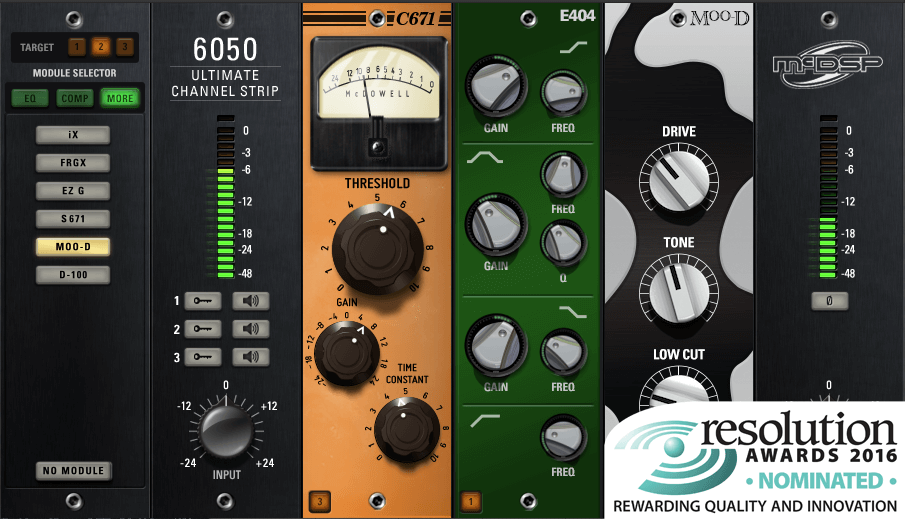The McDSP 6050 Ultimate Channel Strip offers a ton of tonal options in a familiar “500 series” layout for your DAW.
The 500 series style of “mini rack” external processors offers up great sound options in a small form factor, and can be moved, and configured pretty much on the fly without any tools. McDSP has taken that neat, small form factor and flexible configuration setup and brought all of it together with their latest 500 series plug-in: the McDSP 6050 Ultimate Channel Strip.
RELATED: A Complete Guide to Plug-Ins For Your Home Studio
With this plug-in, there are 28 modules to choose from, including EQs, compressors, expanders, gates, distortion, and saturators. The models visually reflect the look and feel of the various physical appearances of the modules they’re emulating. They don’t really offer up any “names,” more than likely to not spark any lawsuits with the original manufacturers, but they’re pretty easy to figure out.
Simply load up the plug-in, and insert a module (three can be inserted per plug-in), and start tweaking. It’s easy to swap out various modules to see (well, hear) how the character that’s being emulated responds. The controls are familiar, with a simple analog knob style layout, not having to decipher intense displays. Each has a signature sound, and a certain setting on one might spark a lot of interest, while scrolling to another one (using the same settings) might not give the desired effect.

MCDSP 6050 500 Ultimate Channel Strip plug in
It’s a “season to taste” situation, but there are a lot of “seasonings” to choose from here, bringing the powerful expandability of a larger commercial studio to any home recording situation. The EQ selections are quite tasteful, and work in a musical sense; the inconsistencies and overall character of the actual processor being emulated are there as well, but getting that response is what makes this really desirable. They interact with each other as well, sounding completely different depending on where each module lies in the signal chain. The inclusion of the tube saturation, as well as distortion modules, can really help bring natural sounding elements to the world of plug-ins. Adding some of this nice digital grit can really bring drums and bass guitars to life, alleviating some sterile tracks you may have been tasked to deal with. Considering there are three slots per plug-in, and the fact it doesn’t suck up CPU power, using them on multiple tracks really gives the ability to fine tune and tweak sounds.
One downside to all this is when selecting which module to go in which slot, such as a preamp in slot #1, and a compressor in slot #2 – if you decide it would sound better to have the compressor in the slot #1, it’s still technically #2. Not a big deal breaker, but it might get confusing when moving things around and swapping modules between the various slots.
With the analog look and feel, it means that if you’ve ever had your hands on a physical EQ, compressor, etc., it’s super easy to navigate even without manuals or menus. A professional studio looking to expand their plug-in library should look into shelling out the $279 street price on this. For the home studio owner, this is an easy foray into the world of plug-ins, without needing any audio engineering degree!
PROS: Easy to use interface, great models, excellent tonal options.
CONS: Moving around modules might get confusing.
